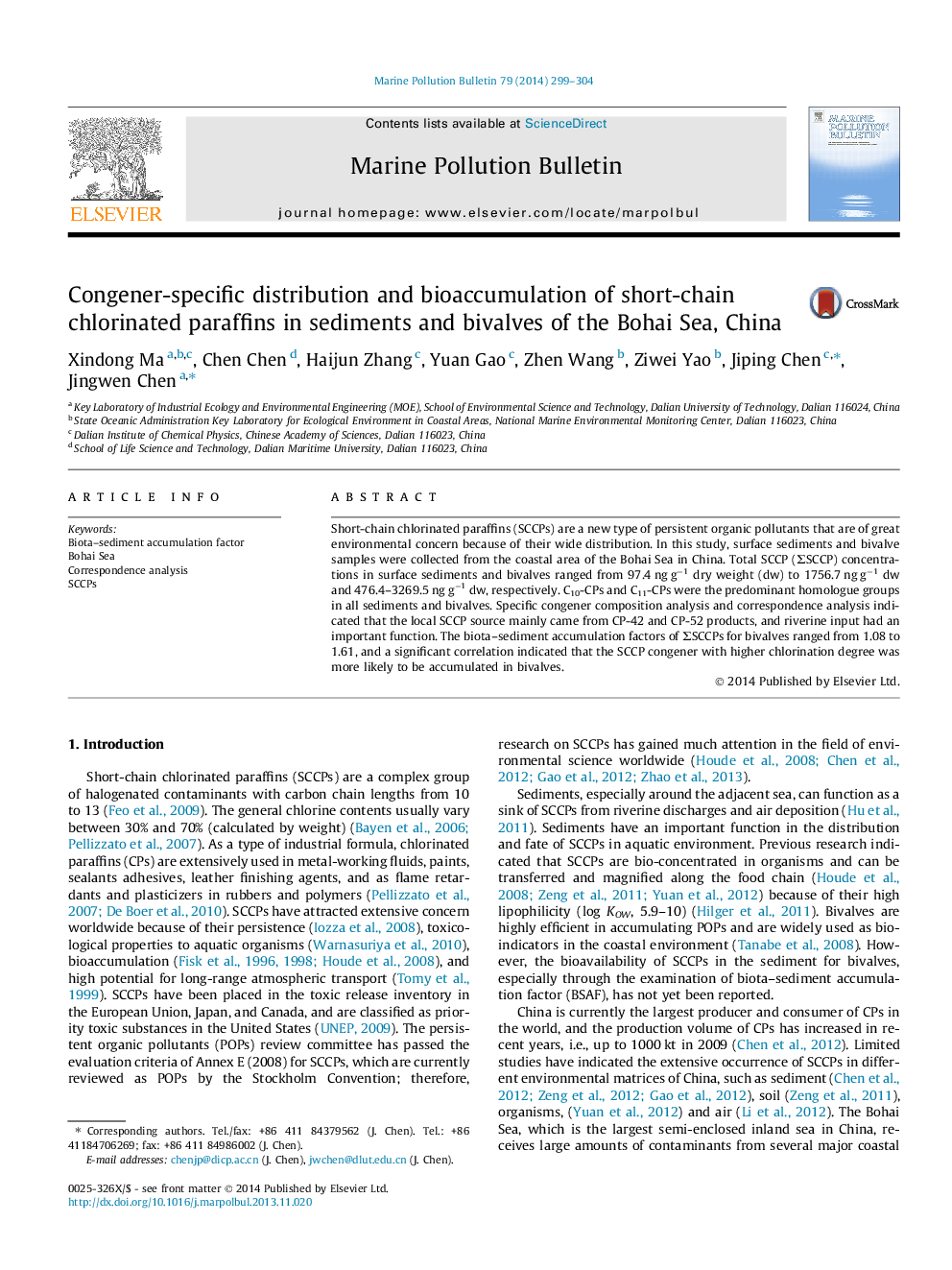| Article ID | Journal | Published Year | Pages | File Type |
|---|---|---|---|---|
| 6358909 | Marine Pollution Bulletin | 2014 | 6 Pages |
Abstract
Short-chain chlorinated paraffins (SCCPs) are a new type of persistent organic pollutants that are of great environmental concern because of their wide distribution. In this study, surface sediments and bivalve samples were collected from the coastal area of the Bohai Sea in China. Total SCCP (ΣSCCP) concentrations in surface sediments and bivalves ranged from 97.4 ng gâ1 dry weight (dw) to 1756.7 ng gâ1 dw and 476.4-3269.5 ng gâ1 dw, respectively. C10-CPs and C11-CPs were the predominant homologue groups in all sediments and bivalves. Specific congener composition analysis and correspondence analysis indicated that the local SCCP source mainly came from CP-42 and CP-52 products, and riverine input had an important function. The biota-sediment accumulation factors of ΣSCCPs for bivalves ranged from 1.08 to 1.61, and a significant correlation indicated that the SCCP congener with higher chlorination degree was more likely to be accumulated in bivalves.
Related Topics
Physical Sciences and Engineering
Earth and Planetary Sciences
Oceanography
Authors
Xindong Ma, Chen Chen, Haijun Zhang, Yuan Gao, Zhen Wang, Ziwei Yao, Jiping Chen, Jingwen Chen,
